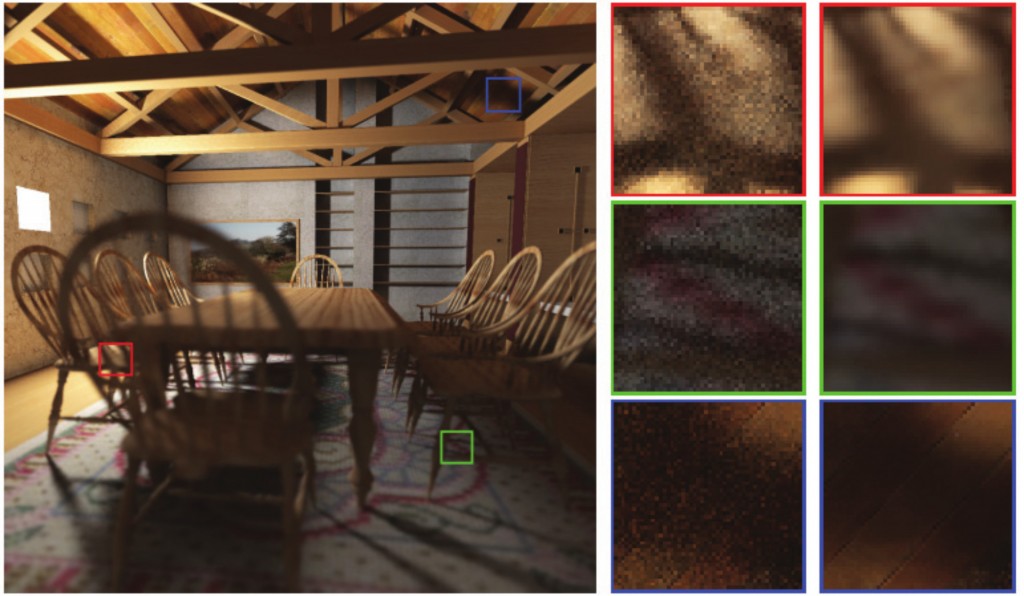Abstract

Monte Carlo integration is firmly established as the basis for most practical, realistic image synthesis algorithms because of its flexibility and generality. However, the visual quality of rendered images often suffers from estimator variance, which appears as visually distracting noise. Adaptive sampling and reconstruction algorithms reduce variance by controlling the sampling density and aggregating samples in a reconstruction step, possibly over large image regions. In this paper, we survey recent advances in this area. We distinguish between “a priori” methods that analyze the light transport equations and derive sampling rates and reconstruction filters from this analysis, and “a posteriori” methods that apply statistical techniques to sets of samples to drive the adaptive sampling and reconstruction process. They typically estimate the errors of several reconstruction filters and select the best filter locally to minimize error. We discuss advantages and disadvantages of recent state-of-the-art techniques and provide visual and quantitative comparisons. Some of these techniques are proving useful in real-world applications, and we aim to provide an overview for practitioners and researchers to assess these approaches. In addition, we discuss directions for potential further improvements.
Copyright Notice
The documents contained in these directories are included by the contributing authors as a means to ensure timely dissemination of scholarly and technical work on a non-commercial basis. Copyright and all rights therein are maintained by the authors or by other copyright holders, notwithstanding that they have offered their works here electronically. It is understood that all persons copying this information will adhere to the terms and constraints invoked by each author’s copyright. These works may not be reposted without the explicit permission of the copyright holder.